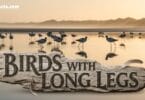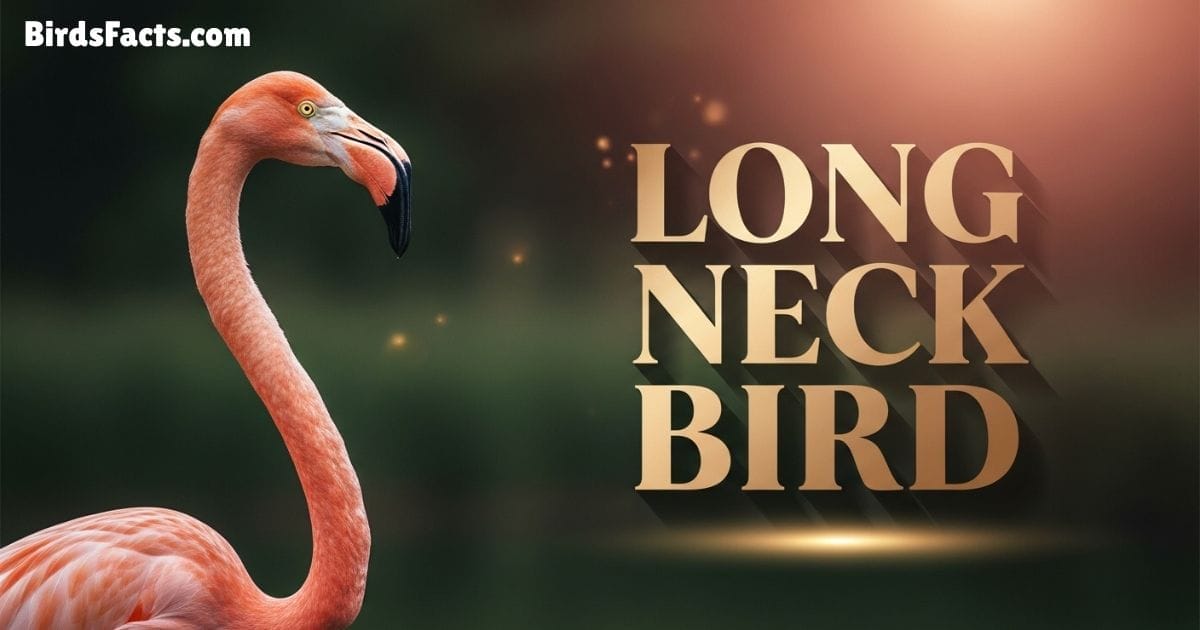
Long Neck Bird
Sometimes When You See A Long Neck Bird Like A Heron Standing Tall By The Water Or A Swan Gliding Gracefully Across A Lake You Can’t Help But Wonder Why Some Birds Have Such Unusually Long Necks. They Look Elegant A Little Mysterious And Definitely Different From Most Of The Smaller Birds We Spot In Our Daily Lives. If You’ve Ever Caught Yourself Curious About These Unique Creatures You’re Not Alone I Used To Ask The Same Questions.
These Long Neck Bird Species Aren’t Just Beautiful To Watch; Their Elongated Necks Serve Amazing Purposes In The Wild. From Helping Them Reach Food Deep In The Water To Giving Them A Better View Of Predators Every Long Neck Has A Story To Tell. In This Post We’ll Explore Some Of The Most Fascinating Species And Uncover Why These Graceful Birds Stand Out In The Avian World.
Australian Emu
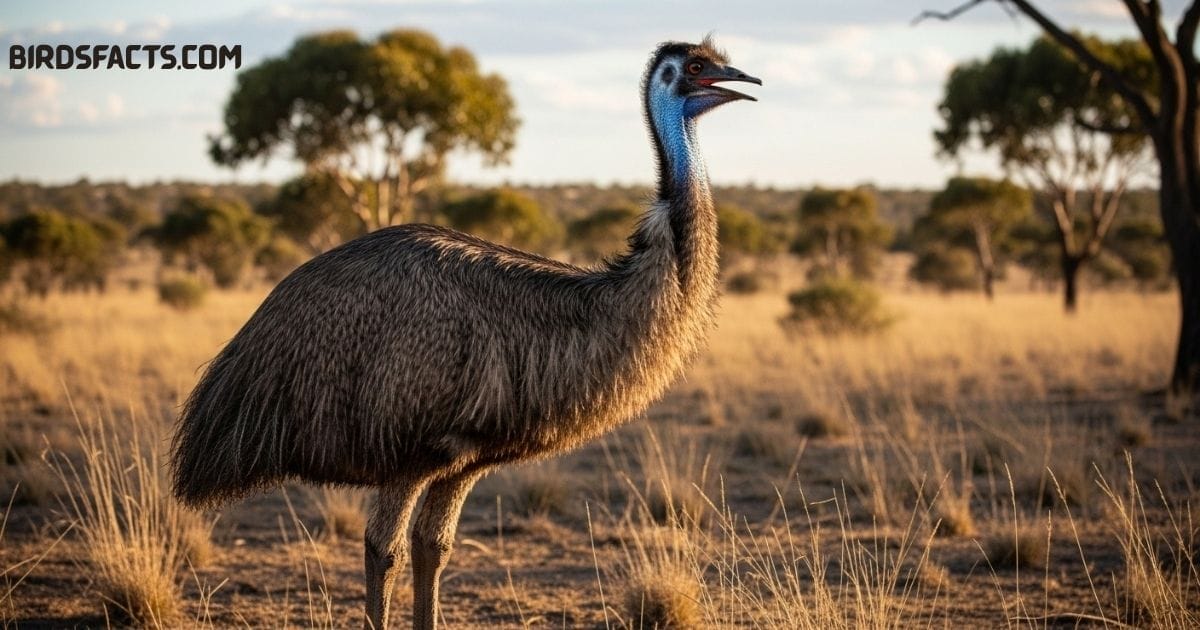
An Australian Emu with long legs, shaggy brown feathers, and a long neck walking across open grassland.
The Emu Is Australia’s Largest Long Neck Bird Closely Related To The Ostrich. Standing Almost Six Feet Tall It Has A Sturdy Build And A Long Neck That Helps It Spot Food And Danger Across The Open Plains Though Unable To Fly The Emu Is A Remarkable Runner Capable Of Sprinting At Speeds Close To 30 Miles Per Hour With Its Powerful Legs It Roams Great Distances Through The Dry Grasslands In Search Of Seeds Fruits And Insects.
This Long Neck Bird Relies On Its Height And Sharp Eyesight To Notice Predators Like Dingoes From Afar Often Moving In Small Groups It Stays Cautious While Feeding. Unlike Water Birds That Fish The Emu Feeds On Vegetation And Small Land Creatures. Its Mix Of Speed Awareness And Endurance Makes It One Of The Most Resilient And Well-adapted Birds In The Australian Outback.
Anhinga
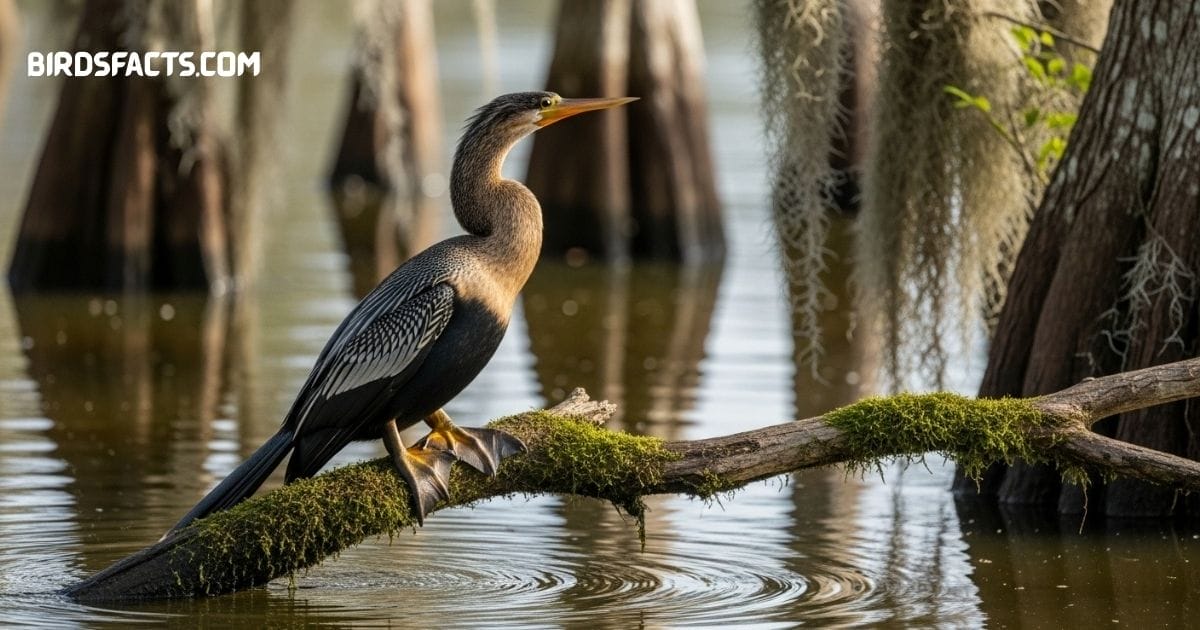
An Anhinga with a long neck and sharp bill spreading its wings to dry near the water.
Often Called The “snake Bird” The Anhinga Is A Remarkable Long Neck Bird Known For Its Slender S-shaped Neck That Gives It A Snake Like Look While Swimming. Common In Freshwater Wetlands Across The Americas It Uses Its Flexible Neck To Spear Fish With Incredible Speed. Unlike Most Birds It Swims With Its Body Completely Underwater Leaving Only The Head And Neck Visible Above The Surface A Perfect Disguise For Ambushing Prey.
This Long Neck Bird Also Has An Unusual Way Of Drying Its Feathers Since It Lacks The Waterproof Oils Found In Ducks. After Diving It Perches With Wings Spread Wide Soaking Up The Sun In A Striking Pose. Its Elegant Form Expert Hunting Technique And Unique Anatomy Make The Anhinga One Of The Most Captivating Birds To Watch In The Wild.
American Flamingo
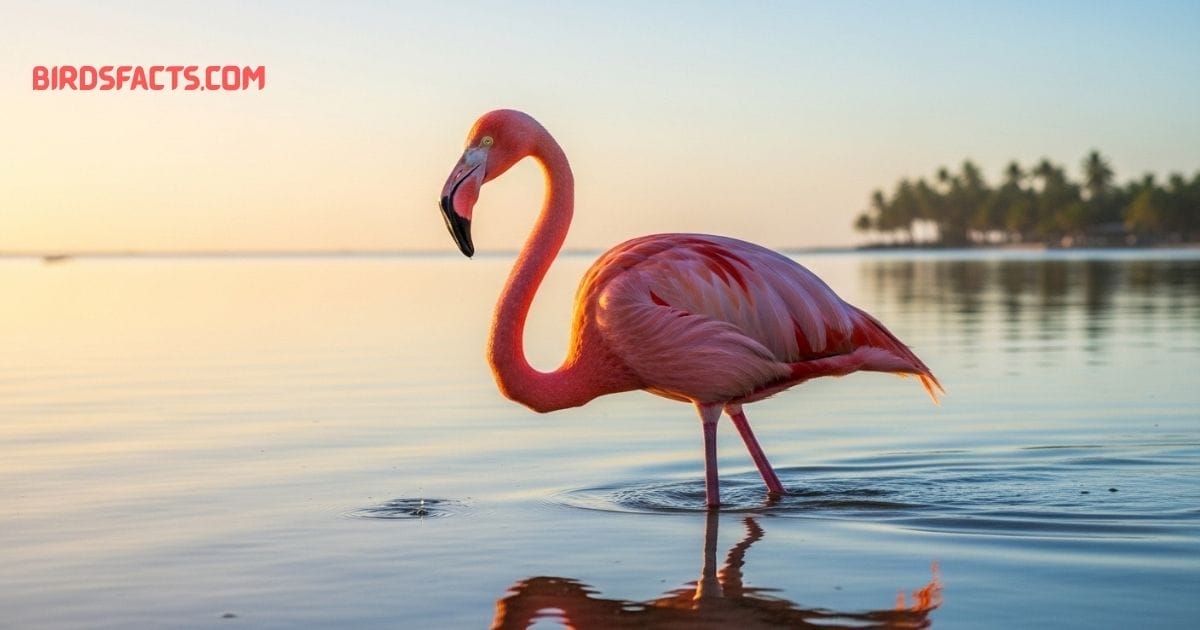
An American Flamingo with bright pink feathers and long legs wading in shallow water.
The American Flamingo Is One Of The Most Striking Long Neck Bird Species Known For Its Bright Pink Feathers And Graceful Posture. Its Exceptionally Long Neck Is Perfectly Designed For Filter Feeding In Shallow Lagoons And Saltwater Flats By Dipping Its Head Upside Down The Flamingo Separates Algae Crustaceans And Plankton From The Water With Ease.
This Long Neck Bird Also Uses Its Neck For Communication And Social Bonding During Courtship Flocks Of Flamingos Perform Elegant neck Waving Dances That Strengthen Pair Bonds And Display Unity. These Graceful Movements Showcase Not Only The Bird’s Beauty But Also Its Remarkable Coordination And Group Behavior.
Ardea cinerea
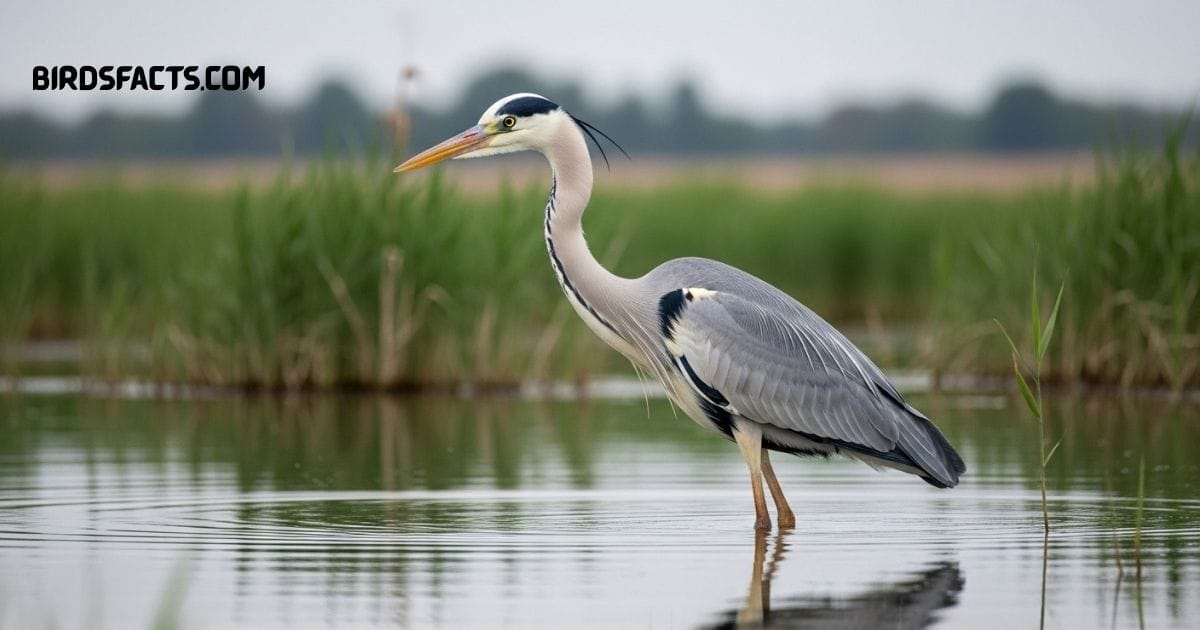
A Grey Heron (Ardea cinerea) with long legs and gray plumage standing in shallow water.
The Grey Heron (ardea Cinerea) Is A Widespread Wading Bird Found Across Europe Asia, And Parts Of Africa. Its Long S Shaped Neck Helps It Remain Still For Long Periods Before Striking At Fish With Its Dagger Like Bill. Patience Is Its Greatest Hunting To
When In Flight The Grey Heron Tucks Its Neck Into An S Curve A Typical Trait Among Heron This Adaptation Reduces Wind Resistance And Gives The Bird A Streamlined Silhouette Its Elegant Posture And Hunting Precision Make It One Of The Most Iconic Wetland Birds.
Ardeotis kori
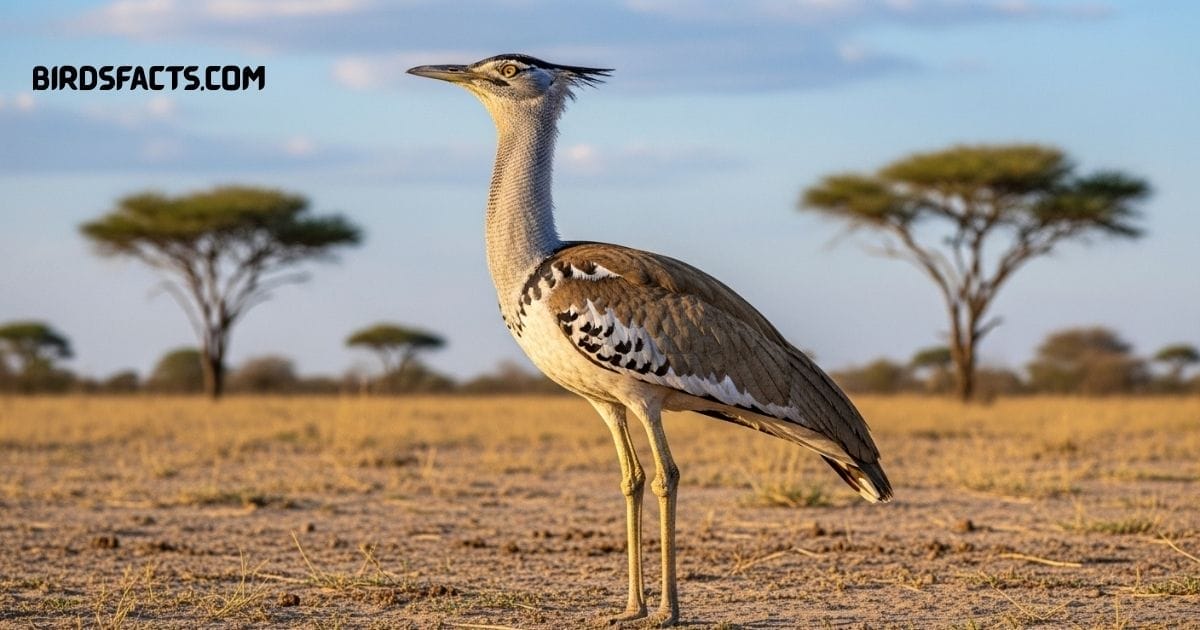
A Kori Bustard (Ardeotis Kori) With A Large Body, Long Legs, And Mottled Brown And Gray Plumage Walking Across Grassland.
The Kori Bustard Is One Of The Heaviest Flying Long Neck Birds In The World Often Weighing Over 30 Pounds Its Tall Frame And Graceful Posture Make It Stand Out In The African Savannas While It Can Fly When Needed It Prefers To Walk Slowly Across The Grasslands Searching For Seeds Insects And Small Reptiles Its Long Neck Helps It Scan The Horizon For Predators And Food Giving It Both Height And Awareness In Its Natural Habitat.
During Mating Season This Magnificent Long Neck Bird Uses Its Neck As A Display Tool. The Male Inflates His Neck And Puffs Out His Feathers To Appear Larger And More Impressive To Females. This Display Is Often Accompanied By Deep Calls And Majestic Struts Such Behaviors Show How The Bird’s Neck Is Not Only Useful For Survival But Also Plays A Key Role In Courtship And Communication.
Black Swan
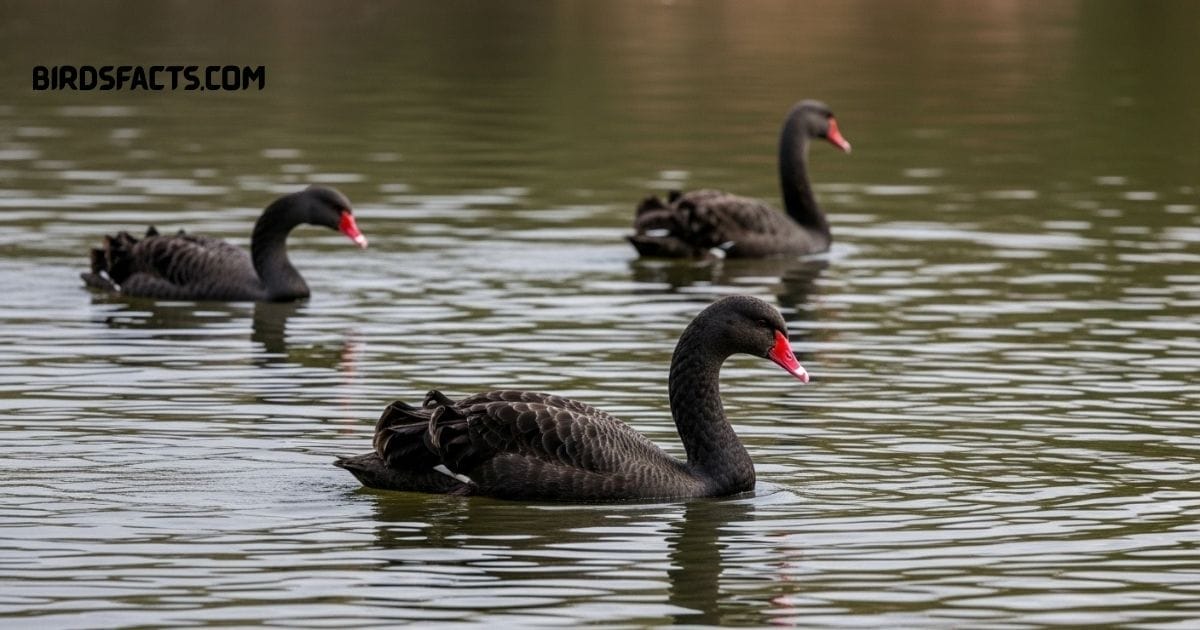
A Black Swan With Striking Black Plumage And A Bright Red Bill Gracefully Swimming In A Lake.
Native To Australia The Black Swan Is A Graceful Long Neck Bird Easily Recognized By Its Jet Black Feathers And Bright Red Bill. Its Long Neck Helps It Reach Plants Growing Deep Below The Water’s Surface While It Glides Smoothly Across Lakes And Rivers The Contrast Of Its Dark Plumage Against Calm Blue Water Makes It One Of The Most Striking Sights In Nature.
This Long Neck Bird Often Moves In Groups Showing Strong Social Behavior. During Courtship Or Group Displays Black Swans Stretch And Curve Their Necks In Slow Rhythmic Motions That Look Like A Dance. These Elegant Movements Strengthen Bonds Within The Flock And Show The Natural Beauty Of Life On The Water.
Bewick’s Swan
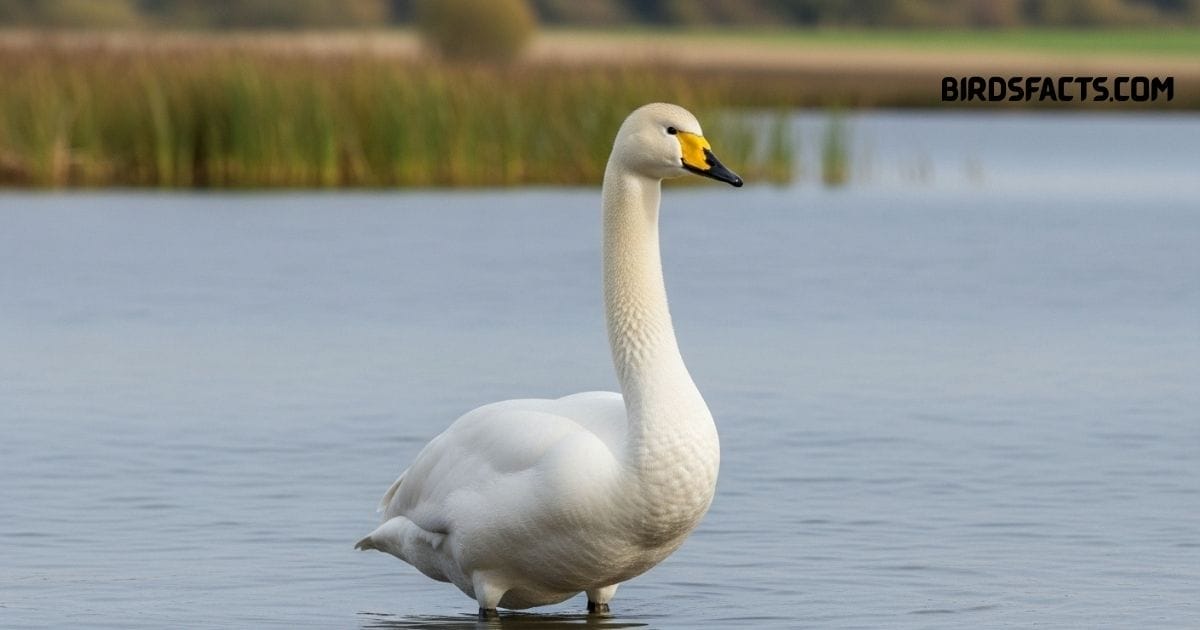
Bewick’s Swan, A Migratory White Swan Species With A Yellow-and-black Bill Commonly Found In Wetlands And Lakes.”
The Bewick’s Swan Is A Smaller Species Of Long Neck Bird Yet Its Neck Is Surprisingly Long And Elegant. Native To Arctic Russia It Migrates Across Europe And Asia During The Cold Months. Its Slender Neck Helps It Reach Underwater Plants And Graze On Grasses In Open Fields. Despite Its Size It Moves With Calm Grace Both On Land And In Water.
This Long Neck Bird Is Easy To Recognize By The Yellow And Black Pattern On Its Beak And Its Gentle Curved Neck. During Migration Flocks Of Bewick’s Swans Can Be Seen Flying In Perfect Formation Their Necks Stretched Forward In Harmony. Their Balance Of Beauty And Adaptability Shows How Vital Neck Length Is To Their Way Of Life.
Black-Necked Stork

Black-necked Stork, A Tall Wading Bird With A Black Neck, Red Legs, And White Body Often Seen In Wetlands And Marshes.
The Black Necked Stork Called Jabiru In Australia Is A Tall Long Neck Bird Often Seen Near Ponds And Swamps. It Walks Slowly Through The Shallow Water Watching For Fish And Frogs. When It Finds One It Moves Quickly And Catches It In A Single Strike. Its Long Legs And Neck Help It See Better And Move Easily Through The Wetland.
This Long Neck Bird Has Black And White Feathers That Shine With A Blue-green Light In The Sun. It Uses Its Neck To Pull Fish From The Water And To Look Around For Danger People Say That When A Black-necked Stork Is Seen Nearby The Land And Water Around It Are Clean And Full Of Life.
Bubulcus ibis

Bubulcus Ibis, Or Cattle Egret, A Small White Heron With A Yellow Bill Often Seen Near Livestock And Wetlands
The Cattle Egret Is A Small Long Neck Bird That Thrives In Grasslands And Farmlands Across Many Parts Of The World. Unlike Most Long-necked Water Birds It Doesn’t Wait By The Water’s Edge. Instead It Follows Cattle And Even Tractors Catching Insects And Frogs That Are Disturbed As They Move. Its Long Neck Helps It Stay Alert Watching The Ground Carefully For Any Quick Movement. Though Small In Size It’s An Active And Clever Hunter.
This Long Neck Bird Becomes Even More Striking During The Breeding Season When Soft Golden Feathers Appear On Its Head And Chest. It Often Nests In Large Colonies Filling Trees With Sound And Motion. Adaptable And Bold The Cattle Egret Has Learned To Live Close To People And Livestock Becoming One Of The Most Widespread And Successful Long-necked Birds In The World.
Black-headed Heron
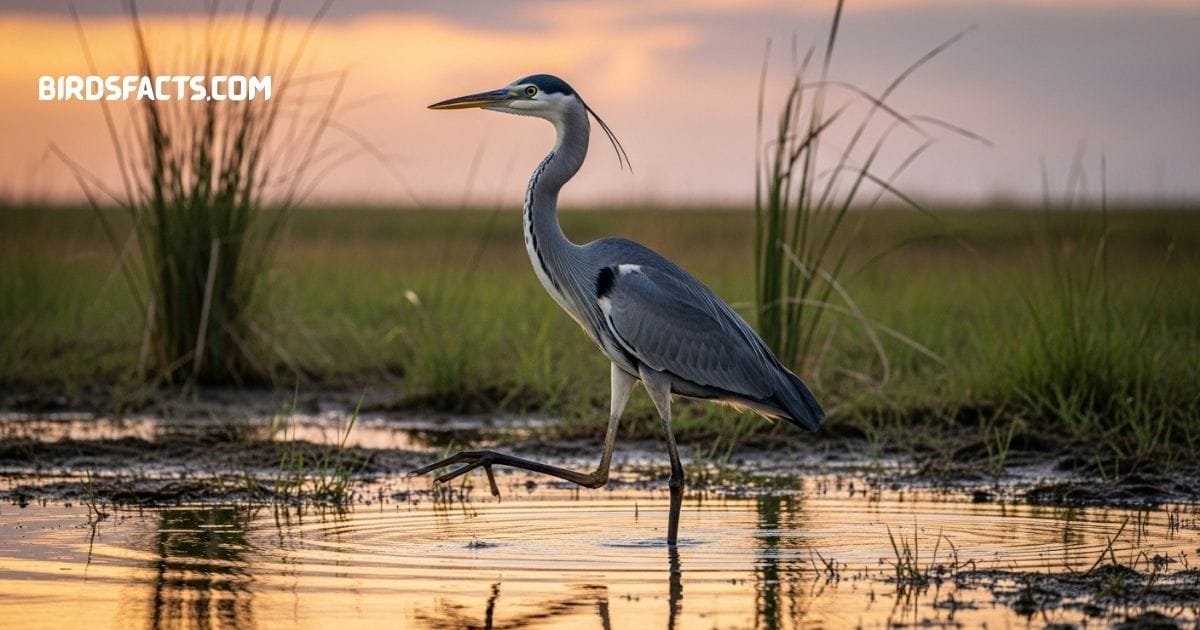
Black-headed Heron, A Tall Gray Heron With A Black Head And Long Legs Commonly Found In African Wetlands And Savannas.
The Black Headed Heron Is A Tall Long Neck Bird Often Seen Across Africa’s Open Fields And Wetlands. It Stands Quietly Among The Grass Its Long Neck Ready To Strike At Frogs Fish Or Insects The Moment They Move With Each Careful Step It Keeps Its Body Still And Eyes Sharp Using Height To Scan The Ground For Any Sign Of Prey Its Strong Neck And Spear Shaped Bill Make It A Skilled Hunter That Rarely Misses A Strike. The Bird’s Calm Patience And Balance Show The Beauty Of Nature’s Design.
This Long Neck Bird Is Similar To The Grey Heron But Can Often Be Found Hunting Farther From Rivers And Lakes. It Adapts Easily To Dry Grasslands Feeding Wherever Food Is Found. With Its Tall Frame And Steady Walk The Black Headed Heron Brings Life And Grace To Every Landscape It Crosses Proving How Well Long Necked Birds Thrive In Changing Habitats.
Canada Goose
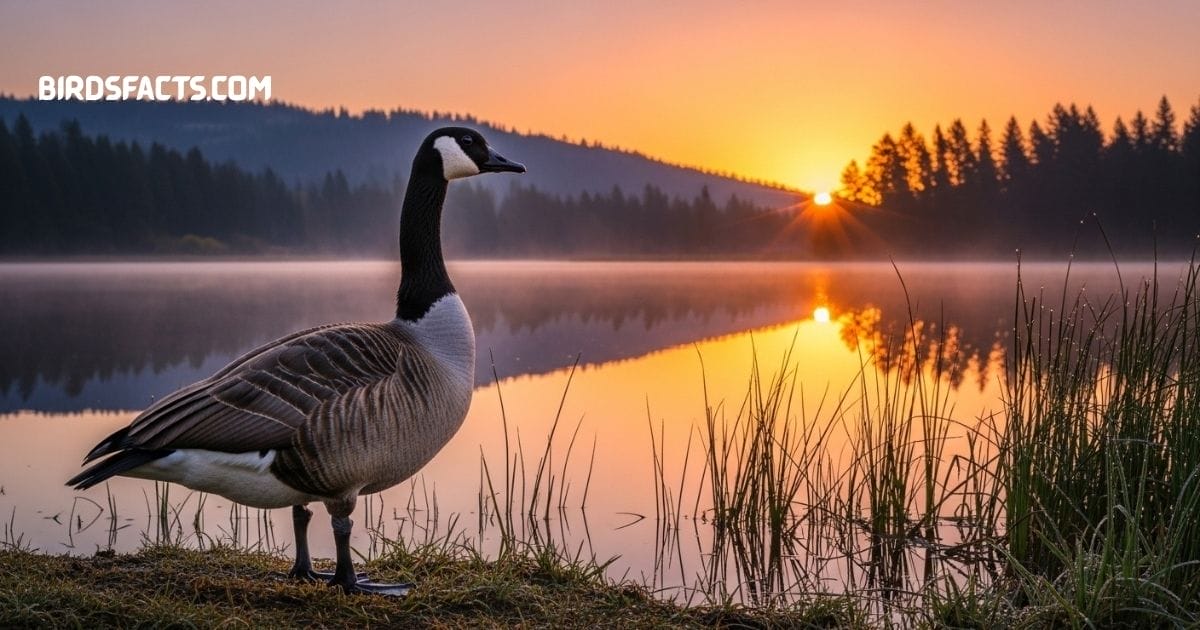
A Canada Goose With A Black Head, White Cheek Patch, And Brown Body Swimming In A Pond.
The Canada Goose Is A Familiar Long Neck Bird Known For Its V Shaped Flight And Loud Honking Calls That Echo Across The Sky. Its Long Black Neck Marked By A White Cheek Stripe Makes It Easy To Recognize Anywhere. The Neck Helps It Graze Comfortably On Grass In Open Fields Or Shallow Water Giving It Access To Food On Land And In Ponds Families Of Geese Often Move Together Their Necks Stretched Tall As They Feed And Stay Alert For Danger.
This Long Neck Bird Is Also Known For Its Strong Sense Of Togetherness Geese Use Neck Movements And Head Positions To Warn Of Predators Guide Younger Birds Or Keep Their Flocks In Line During Migration. Their Unity Communication And Graceful Movements Show How The Neck Is Not Only Useful For Feeding But Also For Keeping Family Bonds Strong.
Cygnus columbianus bewickii

A Cygnus Columbianus Bewickii, Also Known As Bewick’s Swan, With White Plumage And A Short Yellow-and-black Bill Swimming On A Lake.
A Subspecies Of The Tundra Swan The Bewick’s Swan Is A Graceful Long Neck Bird Known For Its Elegant Posture And Calm Nature It Breeds In The Frozen Tundra Of The Arctic Before Flying South During Winter. Its Long Neck Helps It Reach Underwater Plants And Grasses In Lakes And Wetlands. When Feeding It Often Dips Its Head Deep Below The Surface Moving Slowly And Quietly Through The Water.
This Long Neck Bird Stands Out Because Of The Yellow And Black Pattern On Its Beak Which Is Unique To Each Swan They Are Often Seen Feeding Together In Perfect Rhythm Their Necks Stretching And Bending In Harmony. Watching A Group Of Bewick’s Swans Move Like This Is A Peaceful Sight That Shows The Quiet Beauty Of Long-necked Birds In The Wild.
Cygnus atratus
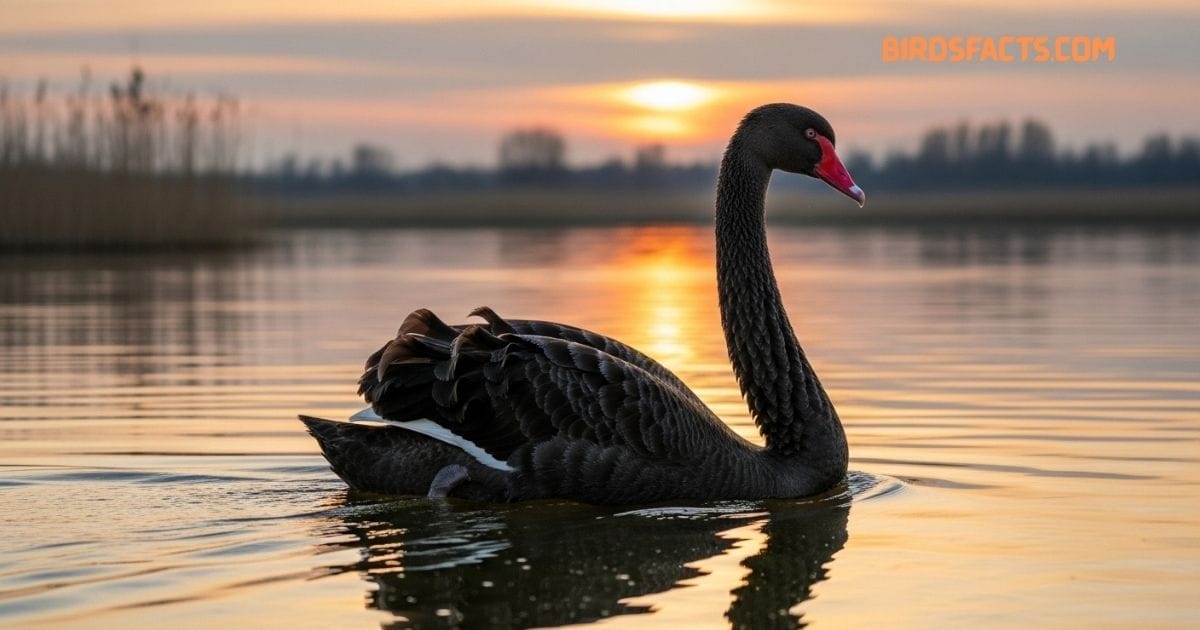
A Cygnus Atratus, Commonly Known As A Black Swan, With Black Feathers And A Bright Red Bill Gliding On A Lake.
The Black Swan Scientifically Called Cygnus Atratus Is A Stunning Long Neck Bird Admired For Its Elegance And Calm Presence Its Gracefully Curved Neck Helps It Reach Underwater Plants As It Glides Effortlessly Across Lakes And Rivers. Covered In Deep Black Feathers With A Bright Red Bill The Bird Stands Out As One Of Nature’s Most Beautiful Contrasts Found Mainly In Australia It Moves With Quiet Confidence And Beauty That Reflect Both Strength And Tranquility.
This Long Neck Bird Is Also Famous For Its Elegant Courtship Rituals During Mating Pairs Face Each Other And Intertwine Their Necks In Smooth Rhythmic Motions That Resemble A Dance These Tender Displays Not Only Capture The Eye But Also Deepen The Lifelong Bond Between Partners Making The Black Swan A Timeless Symbol Of Devotion And Grace.
Egretta tricolor

An Egretta Tricolor, Or Tricolored Heron, With A Slender Neck, Bluish-gray Body, And White Belly Standing In Shallow Water.
The Tricolored Heron Is A Tall Slim Long Neck Bird That Lives Near Lagoons And Estuaries. Its Blue Gray Wings White Belly And Reddish Neck Make It Easy To Recognize Among Water Birds. With Its Long Neck And Pointed Bill It Moves Quickly And Catches Fish With Perfect Timing. Unlike Other Herons That Wait Quietly This One Prefers To Stay In Motion Stepping Or Running Through Shallow Water To Find Food.
This Long Neck Bird Hunts With Energy And Grace. It Makes Quick Moves Short Runs And Sudden Turns To Grab Fish. The Way It Mixes Speed And Beauty Gives The Tricolored Heron A Special Charm That Sets It Apart From Other Birds In Its Watery Home.
European Spoonbill
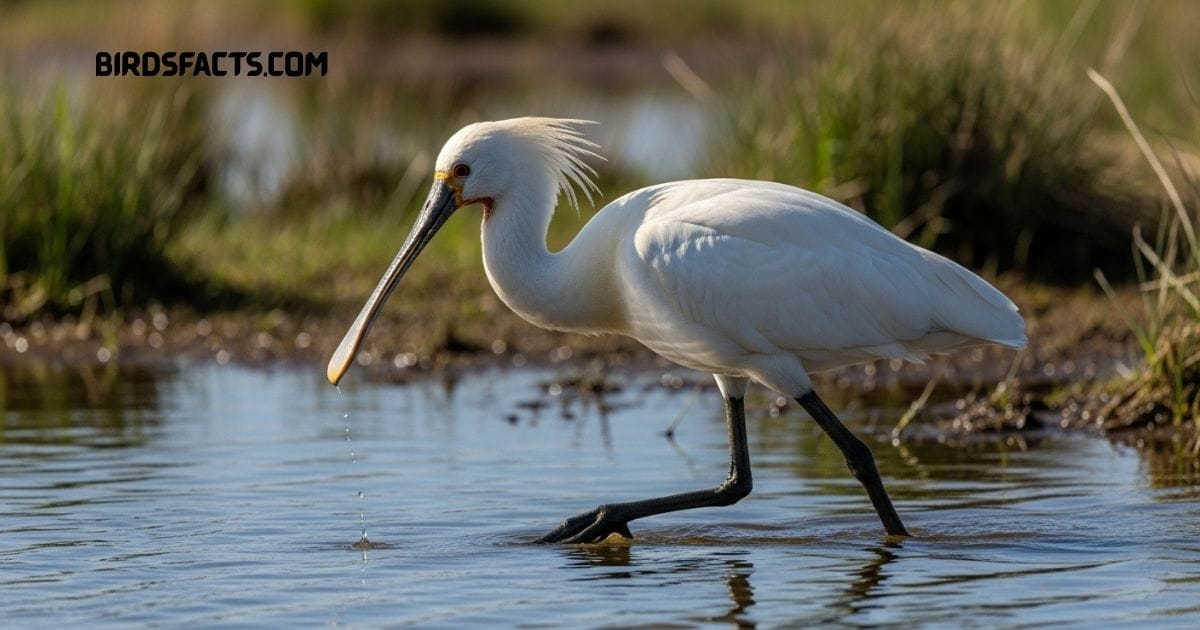
A European Spoonbill With White Plumage And A Long Flat Spoon-shaped Bill Wading In Shallow Water.
The European Spoonbill Is A Graceful Long Neck Bird Known For Its Long Flat Spoon-shaped Bill And Elegant Posture. It Wades Through Shallow Wetlands Sweeping Its Bill From Side To Side To Catch Small Fish And Insects. Its Long Neck Helps It Reach Farther While Feeding Allowing It To Cover A Wider Area With Each Movement. The Sight Of A Spoonbill Feeding In Calm Water Is One Of The Most Peaceful Scenes In Nature.
This Long Neck Bird Becomes Even More Striking During The Breeding Season When Soft White Plumes Appear On Its Head. In Flight It Stretches Its Neck Forward Creating A Long Balanced Shape As It Glides Smoothly In Groups. With Its Beauty Precision And Calm Presence The European Spoonbill Remains One Of The Most Admired Birds Of Europe’s Wetlands.
Black-necked Stork
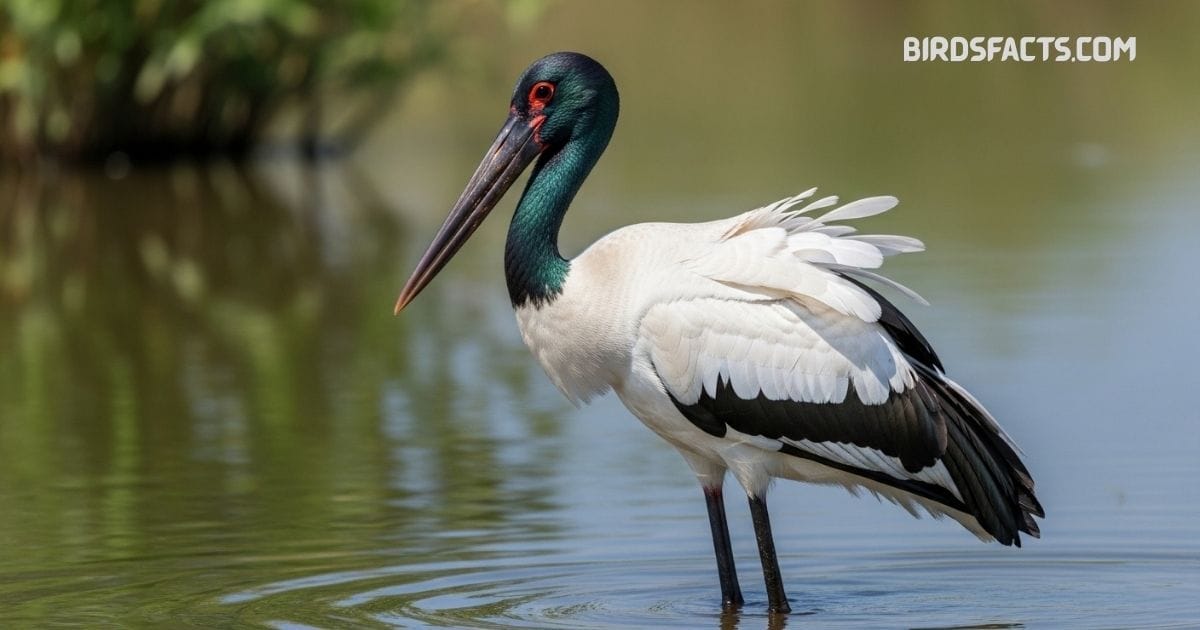
An Ephippiorhynchus Asiaticus Australis, Or Black-necked Stork, With A Glossy Black Neck, White Body, And Long Red Legs Standing In A Wetland.
The Black-necked Stork Also Known As The Jabiru Is A Tall Long Neck Bird That Stands Out For Its Beauty And Size Found Mostly In Northern And Eastern Australia It Lives Near Wetlands Rivers And Floodplains. Its Black And White Feathers Shine With A Metallic Blue Green Sheen In The Sunlight Making It One Of The Most Eye Catching Birds In The Region With Its Long Legs And Steady Movements It Hunts Quietly In Shallow Water Striking Quickly At Fish And Frogs.
This Long Neck Bird Is Known For Its Graceful Posture And Strong Family Bonds Males Can Be Recognized By Their Dark Brown Eyes While Females Have Bright Yellow Ones. Its Impressive Height Colorful Feathers And Calm Presence Have Made The Black-necked Stork A True Symbol Of Australia’s Wild Wetlands.
Greater Flamingo
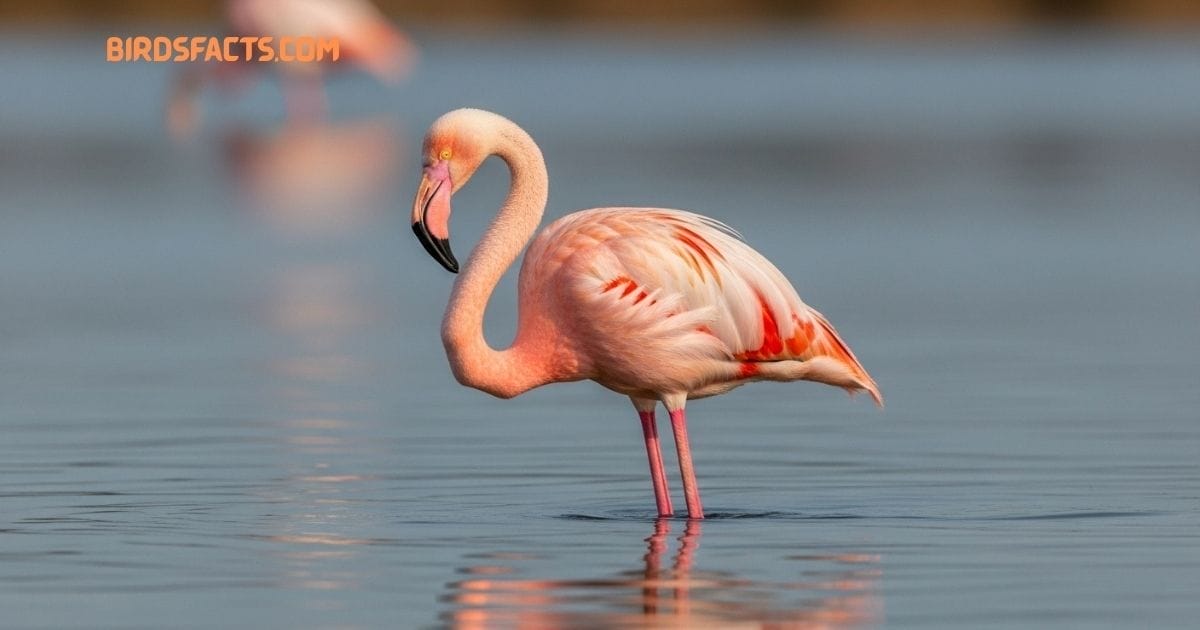
A Greater Flamingo With Pale Pink Feathers, Long Legs, And A Curved Bill Wading In Shallow Water.
The Greater Flamingo Is The Tallest Long Neck Bird Among All Flamingo Species Often Reaching Over Five Feet In Height. Its Soft Pink To Crimson Feathers Come From The Carotenoids In Its Diet Giving It A Natural Glowing Color. The Long Curved Neck Helps It Feed In Shallow Lagoons By Filtering Water Upside Down Through Its Specially Shaped Bill These Flamingos Live In Saltwater And Brackish Wetlands Gathering In Huge Flocks That Paint The Scenery In Stunning Shades Of Pink.
This Long Neck Bird Also Uses Its Neck For Graceful Courtship Dances During Breeding Season Hundreds Of Flamingos MoveTheir Necks Together In Perfect Rhythm Creating A Breathtaking Display The Flexible Neck Allows Smooth Flowing Movements As They Interact And Stay Connected As A Group Watching Them Stretch And Curve In Unison Reveals The True Beauty Of Balance And Harmony In The Natural World.
Green Heron
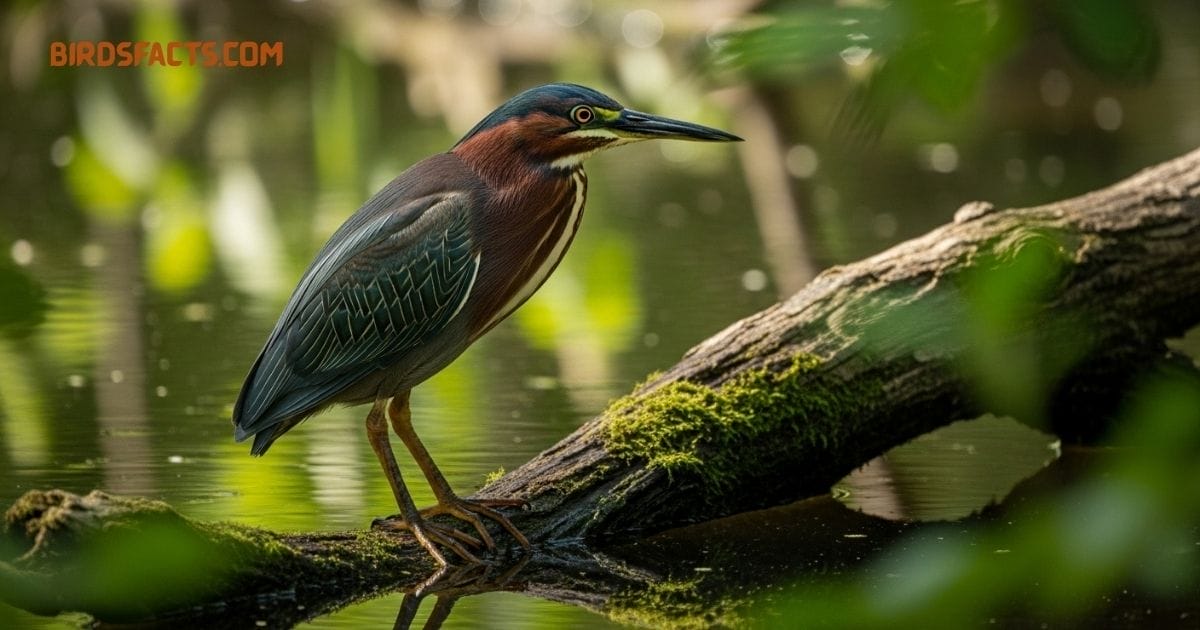
A Green Heron With A Dark Green Back, Chestnut Neck, And Yellow Legs Perched Near The Water’s Edge.
The Green Heron Is A Small Yet Remarkable Long Neck Bird With A Neck That Stretches Far Beyond What Its Compact Body Suggests Most Of The Time It Appears Hunched And Still Blending Perfectly Into Its Surroundings But When A Fish Swims Close Its S-shaped Neck Shoots Forward With Lightning Speed. This Quick Strike Often Helped By Clever Tactics Like Dropping Insects Or Feathers As Bait Makes It One Of The Smartest Hunters Among Herons.
This Long Neck Bird Proves That Size Doesn’t Define Skill. Unlike Larger Herons It Prefers Calm Ponds Shaded Marshes And Quiet Backwaters Where Patience Pays Off. The Neck Is Not Just For Feeding—it’s Also Used In Displays Of Dominance Or During Courtship. With Its Sharp Instincts And Surprising Reach The Green Heron Shows How Perfectly Nature Designs Even The Smallest Hunters.
Great Egret
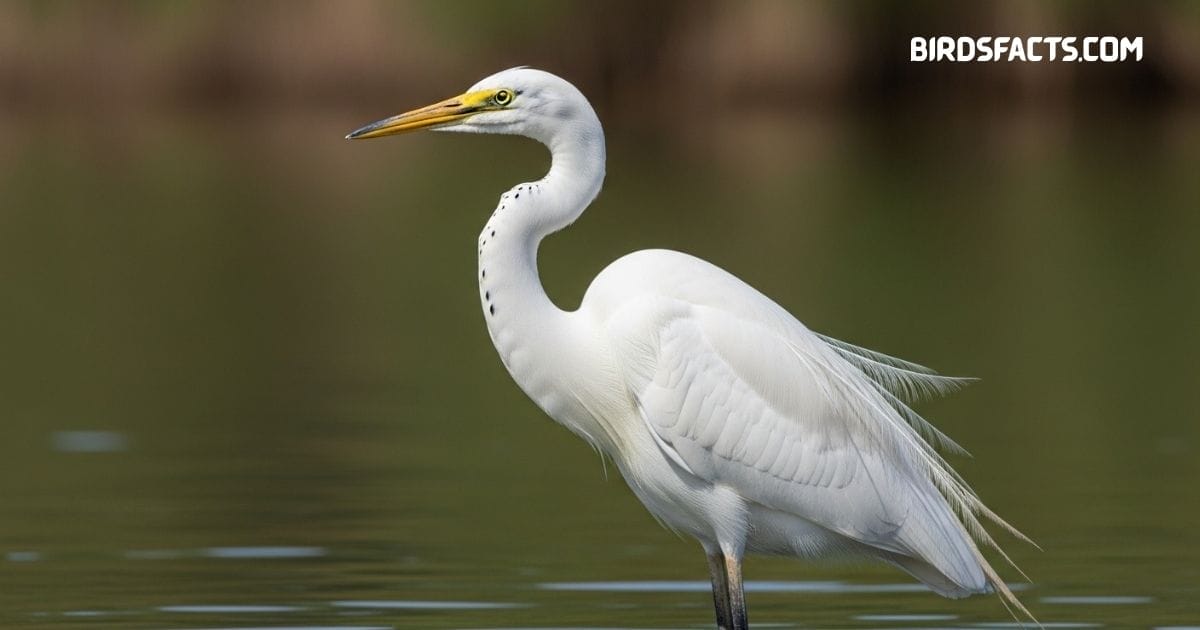
A Great Egret With Pure White Plumage, Long Legs, And A Yellow Bill Standing In Shallow Water.
The Great Egret Is One Of The Most Elegant Long Neck Bird Species Found Across Wetlands Around The World Its Pure White Feathers Long S Shaped Neck And Sharp Yellow Bill Make It A Perfect Hunter In Shallow Water With Flexible Neck Bones It Can Strike Swiftly To Catch Fish Frogs Or Small Reptiles. Its Tall Graceful Figure Gliding Through Marshes Or Standing Still Among Reeds Has Made It One Of The Most Admired Birds In Nature.
This Long Neck Bird Also Uses Its Neck In Beautiful Displays During Mating Season. Males Stretch And Arch Their Necks Spreading Fine White Plumes To Attract A Mate. In Flight It Tucks Its Neck Neatly Into An S-shape Giving It A Smooth And Balanced Look. Once Nearly Wiped Out By Plume Hunting In The 19th Century The Great Egret’s Recovery Is A True Story Of Survival — Its Long Neck Now Symbolizing Grace Resilience And Renewal.
Giant Ibis
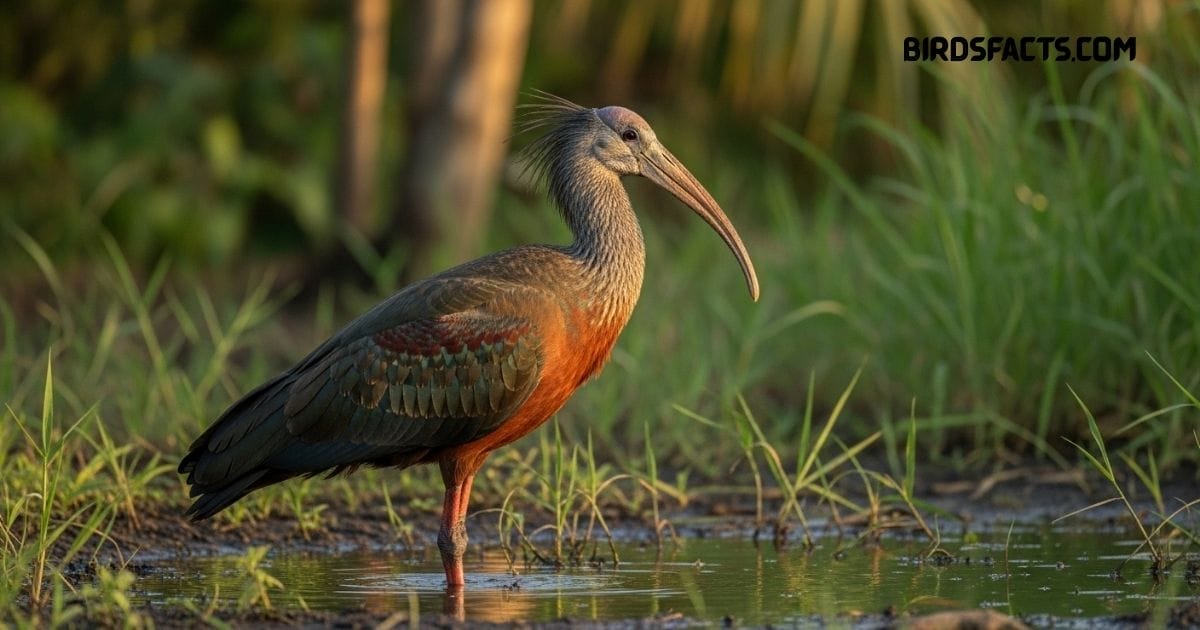
A Giant Ibis With Dark Gray-brown Plumage, Long Curved Bill, And Long Legs Walking Through Grassland.
The Giant Ibis Cambodia’s National Bird Is A Rare Long Neck Bird And One Of The Most Endangered Species In The World Standing Nearly A Meter Tall It Uses Its Long Powerful Neck To Probe Wetlands And Forest Floors For Frogs Insects And Small Crustaceans. Its Dusky Feathers Blend Perfectly With The Muddy Terrain Helping It Stay Hidden While It Searches For Food Despite Its Quiet Nature Its Sheer Size Gives It A Commanding Presence In The Wild.
This Long Neck Bird Depends On Its Neck For More Than Feeding. It Reaches Deep Into Soft Soil And Shallow Pools Using Its Strength And Reach To Find Prey In Hard-to-access Areas. In Flight It Stretches Its Neck Forward To Balance Its Large Body Creating A Unique Unmistakable Silhouette. Sadly With Fewer Than A Thousand Left In The Wild The Giant Ibis Has Become A Symbol Of Resilience And The Fragile Beauty Of Cambodia’s Wilderness.
Goliath Heron
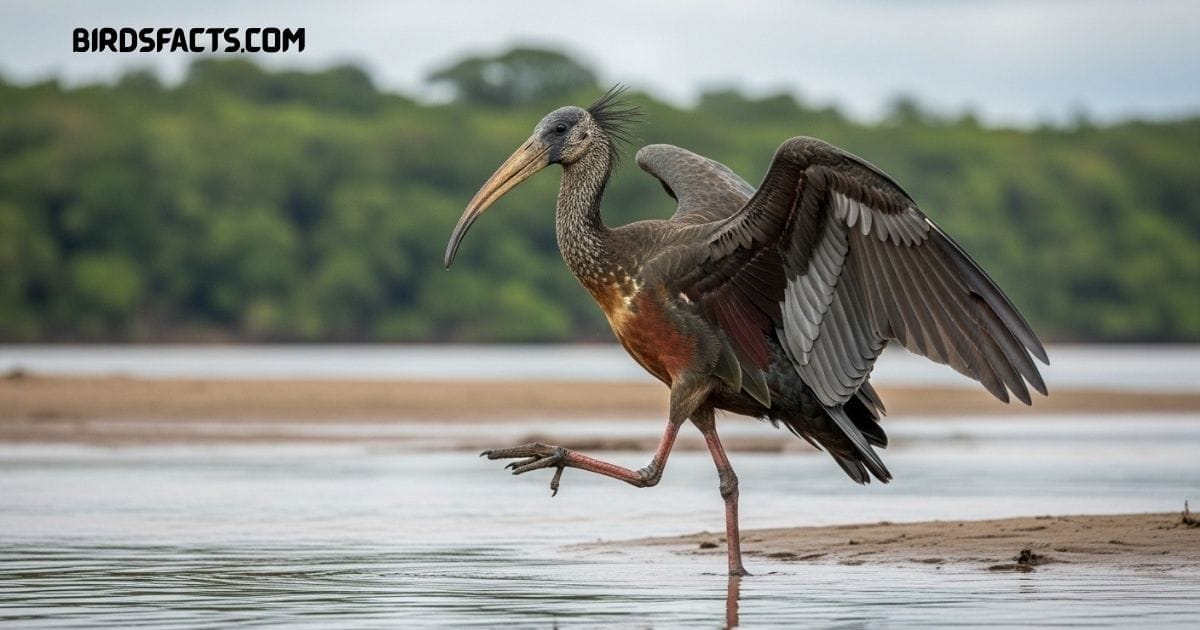
A Giant Ibis With Dark Gray-brown Plumage, Long Curved Bill, And Slender Legs Walking Through Grassland
The Goliath Heron Is The World’s Largest Long Neck Bird Standing More Than Five Feet Tall With A Wingspan Close To Eight Feet. Its Long Powerful Neck Helps It Catch Fish Weighing Over Two Pounds With Remarkable Accuracy. Unlike Smaller Herons It Prefers To Hunt Alone Standing Still For Long Periods Before Striking. Its Patience And Reach Make It One Of The Most Skilled Hunters In African Wetlands.
This Long Neck Bird Is Easy To Recognize By Its Reddish Brown Feathers And Towering Frame. When It Strikes The Neck Moves Like A Spring Fast And Precise. In Flight It Keeps The Neck Slightly Curved To Stay Balanced As It Glides Above Rivers And Marshes Many Birdwatchers Call It A Living Relic A Giant That Looks Almost Prehistoric Combining Size Grace And Power In A Way Few Other Birds Can.
Grey Heron

A Grey Heron Bird With Gray Feathers, Long Legs, And A Pointed Yellow Bill Standing By The Water’s Edge.
The Grey Heron Is A Graceful Long Neck Bird Found Throughout Europe Asia And Africa Its Long S Shaped Neck Allows It To Strike Swiftly At Fish Frogs And Even Small Mammals Often Seen Standing Still For Long Periods It Blends Perfectly Into Reed Beds While Waiting For The Right Moment To Attack. This Quiet Patience And Perfect Timing Make It One Of The Most Skilled Hunters Of The Wetlands.
This Long Neck Bird Folds Its Neck Back In Flight Creating The Classic Heron Shape That Birdwatchers Instantly Recognize. The Neck Helps It Stay Balanced As It Wades Through Deep Water Or Stretches Forward To Catch Its Prey. Even Though It’s A Familiar Sight In Many Places Watching A Grey Heron Spear A Fish With A Sudden Lightning-fast Strike Always Feels Extraordinary.
Little Blue Heron
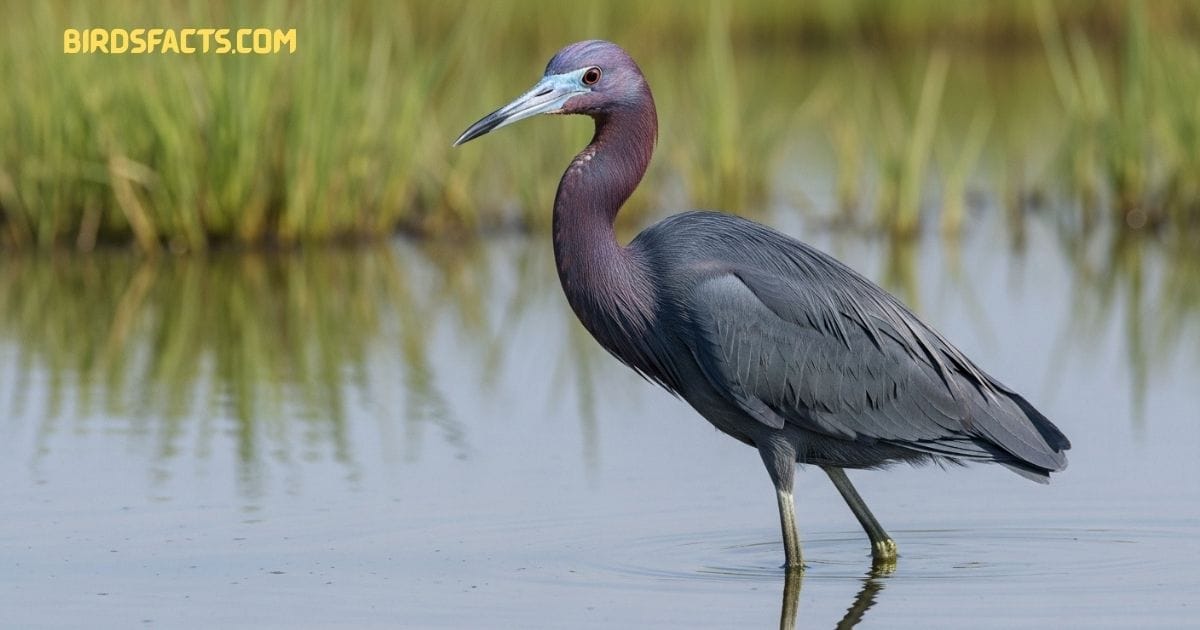
A Little Blue Heron With Slate-blue Plumage And A Slender Dark Bill Wading In Shallow Water.
The Little Blue Heron Is A Small Elegant Long Neck Bird Known For Its Balance Of Beauty And Skill Young Herons Begin With Pure White Feathers Gradually Turning Into The Slate-blue Shade Of Adults A Transformation That Shows Their Growth. Its Slender Neck And Sharp Bill Help It Catch Fish Insects And Crustaceans In Shallow Waters Even Though It’s Smaller Than Most Herons It Moves With Quiet Focus Striking Swiftly When The Right Moment Comes.
This Long Neck Bird Usually Hunts Alone Depending On Patience And Careful Timing. When Prey Moves Nearby Its Neck Extends Quickly Like A Whip Combining Power And Grace. During Breeding Season Its Head And Neck Turn A Deep Reddish-purple Adding Even More Beauty To Its Appearance. Calm Yet Captivating The Little Blue Heron Shows How Nature Combines Elegance With Purpose In The Most Graceful Way.
Marabou Stork

A Marabou Stork With A Bare Pink Head, Large Bill, And Dark Wings Standing On The Ground.
The Marabou Stork Is One Of Africa’s Most Distinctive Long Neck Bird Species Known For Its Bald Head Huge Bill And Hanging Throat Pouch. Often Called The “undertaker Bird” It’s A Scavenger That Thrives Near Water Bodies And Human Settlements. Its Long Bare Neck Helps It Reach Deep Into Carcasses Or Scoop Fish And Scraps With Ease Though Not Conventionally Beautiful It Plays A Vital Role In Keeping The Environment Clean By Feeding On Remains That Other Animals Leave Behind.
This Long Neck Bird Also Uses Its Bare Neck For More Than Feeding. The Exposed Skin Helps Release Body Heat Keeping It Cool In The African Sun. When It Takes Flight Its Vast Wingspan And Extended Neck Create A Surprisingly Graceful Silhouette. Despite Its Awkward Look On The Ground The Marabou Stork Is An Impressive Flier And An Important Part Of Africa’s Natural Balance — Proof That Even The Strangest Birds Have A Purpose.
Ostrich
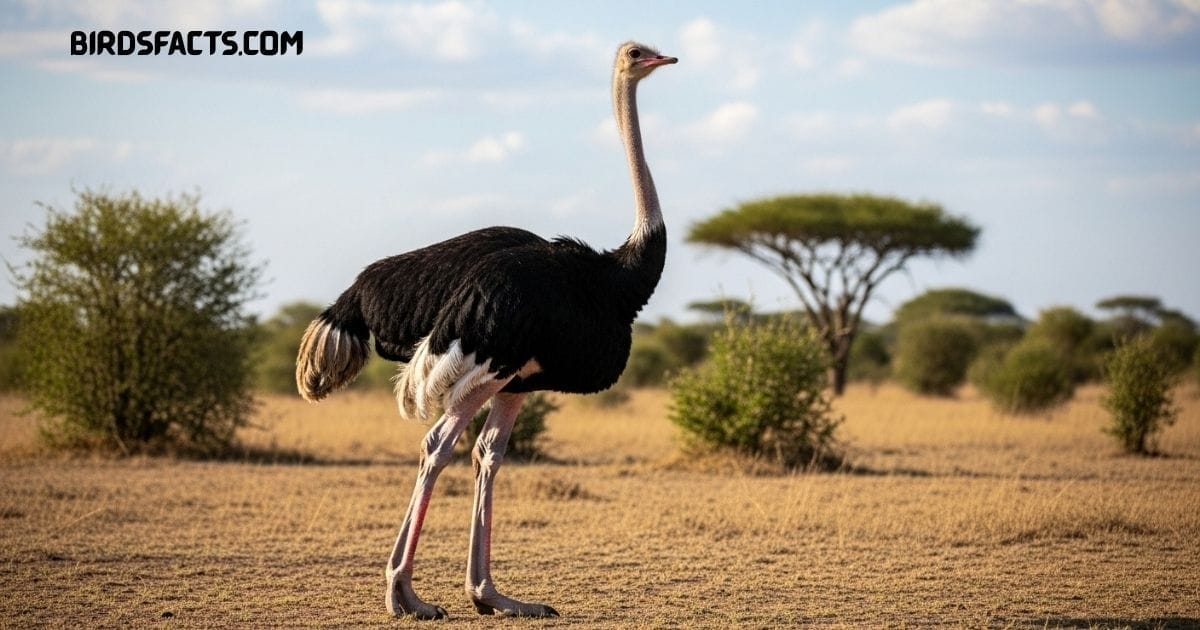
An Ostrich With A Long Neck, Large Body, And Strong Legs Standing In Open Grassland.
The Ostrich Is The World’s Largest Long Neck Bird Standing Taller And Heavier Than Any Other Living Species. Its Neck Can Stretch Nearly Four Feet Giving It A Clear View Of The Savanna To Spot Predators Like Lions From Afar. While Most Long Necked Birds Use Their Reach For Feeding The Ostrich’s Neck Is Designed For Vigilance And Survival It Allows The Bird To Stay Alert And React Quickly While Grazing In Open Grasslands.
This Long Neck Bird Is Also A Record-breaking Runner Able To Sprint At Speeds Of Up To 45 Miles Per Hour Its Neck Helps Maintain Balance During These Powerful Bursts Of Speed. During Mating Season Males Perform Impressive Displays Bowing And Swaying Their Necks To Attract Females. Covered With Light Feathers That Help Regulate Heat The Ostrich Is Perfectly Adapted To Life Under Africa’s Blazing Sun A True Symbol Of Strength And Endurance On Land.
Phoenicopterus ruber
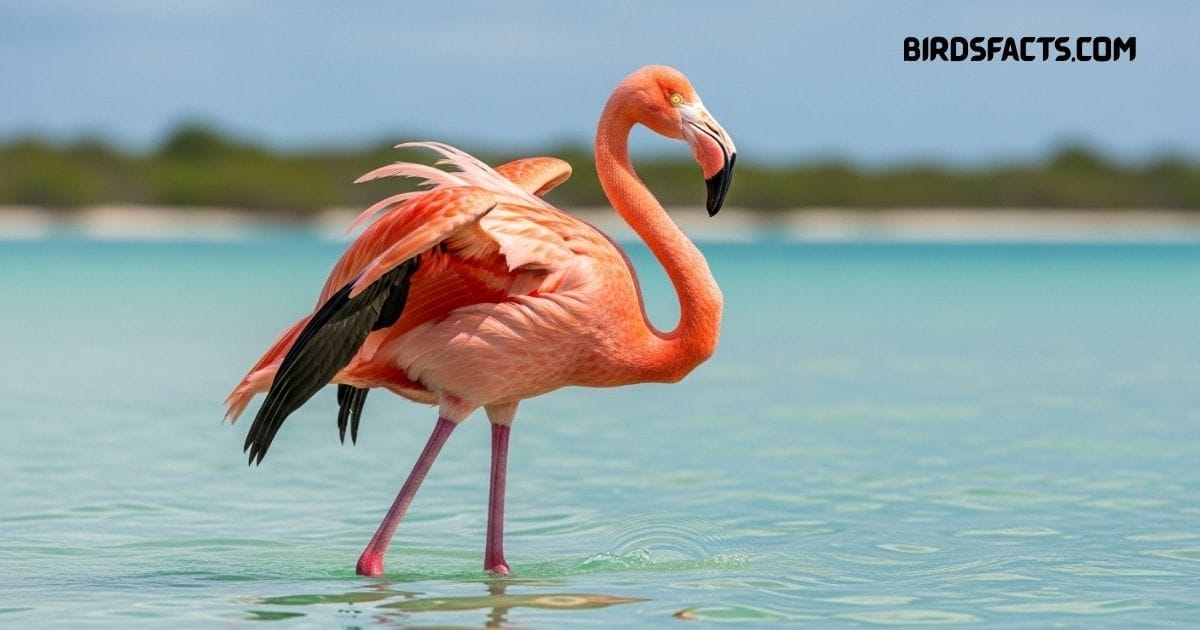
A Phoenicopterus Ruber, Or American Flamingo, With Bright Pink Plumage And Long Legs Wading In Shallow Water.
The American Or Caribbean Flamingo Is A Striking Long Neck Bird Known For Its Vivid Shades Of Orange And Pink. Its Long Neck Allows It To Feed By Sweeping Its Head Upside Down Through Shallow Lagoons Filtering Algae And Tiny Invertebrates From The Water. This Special Feeding Technique Depends Entirely On Its Flexible Neck Without Which The Flamingo Couldn’t Survive In Its Coastal Wetlands. Watching A Group Of These Birds Feeding Together Is Like Seeing A Moving Sea Of Color.
This Long Neck Bird Also Uses Its Neck For Social Interaction. In Large Flocks Flamingos Perform Synchronized “neck-flagging” Displays Raising And Twisting Their Necks In Unison. These Elegant Movements Strengthen Pair Bonds And Help The Flock Stay Connected. With Its Graceful Posture Vivid Plumage And Perfectly Adapted Neck The Caribbean Flamingo Stands As One Of Nature’s Finest Symbols Of Balance Between Beauty And Function.
Platalea ajaja

A Platalea Ajaja, Or Roseate Spoonbill, With Pink Plumage And A Flat Spoon-shaped Bill Wading In Shallow Water.
The Roseate Spoonbill Is A Beautiful Long Neck Bird Found Across The Americas Known For Its Pink Feathers And Unique Spoon Shaped Bill Its Long Pale Neck Gives It Both Reach And Precision While Feeding In Shallow Waters. By Sweeping Its Bill From Side To Side It Catches Fish Insects And Small Crustaceans With Ease. The Neck’s Flexibility Allows It To Cover Large Areas Efficiently Making It A Skilled And Graceful Feeder.
This Long Neck Bird Gets Its Bright Pink Color From The Carotenoids In Its Diet Much Like Flamingos.However Unlike Them It Depends More On Its Specialized Bill Than On Neck Postures For Feeding The Long Neck Helps Balance The Weight Of Its Broad Bill And Adds Elegance To Its Flight. Watching A Roseate Spoonbill Move Its Neck And Bill In Smooth Rhythmic Arcs Across A Quiet Marsh Is A Scene That Always Captivates Birdwatchers.
Plegadis chihi

A Plegadis Chihi, Or White-faced Ibis, With Glossy Dark Plumage And A Long Curved Bill Standing In A Wetland.
The White Faced Ibis Is A Slender Long Neck Bird That Lives In The Wetlands Of North And South America. Its Glossy Feathers Shine With Shades Of Green And Bronze When Sunlight Hits Them With Its Curved Neck And Pointed Bill It Searches Deep In Mudflats For Insects Worms And Small Crustaceans. Its Graceful Stance And Smooth Movements Make It One Of The Most Elegant Wading Birds The Long Neck Gives It Both Reach And Control Letting It Feed In Areas Other Birds Can’t Easily Access.
This Long Neck Bird Looks Even More Striking During The Breeding Season When A White Ring Forms Around Its Face And Its Eyes Turn Bright Red Both Males And Females Perform Gentle Bowing And Stretching Displays With Their Necks To Attract Mates Turning Courtship Into A Beautiful Dance. When Seen In Large Flocks Ibises Move Together In Harmony Dipping Their Necks In Unison As They Feed A Natural Rhythm That Makes Them A Truly Enchanting Sight In The Wetlands.
Platalea leucorodia

A Platalea Leucorodia, Or Eurasian Spoonbill, With White Plumage And A Long Spoon-shaped Bill Wading In Shallow Water.
The Eurasian Spoonbill Is A Graceful Long Neck Bird Easily Recognized By Its Pure White Feathers And Spoon Shaped Bill Its Long Neck Helps It Glide Smoothly Through Shallow Water While Sweeping Its Bill From Side To Side To Find Fish Insects And Crustaceans. This Unique Feeding Style Depends On The Bird’s Neck Flexibility And Reach Allowing It To Cover Wide Areas With Steady Precision. With Its Calm And Steady Movements The Spoonbill Is A Peaceful And Familiar Sight In Wetlands Across Europe And Asia.
This Long Neck Bird Becomes Even More Striking During The Breeding Season When Soft Yellow Patches Appear On Its Breast And Fine Plumes Grow On Its Head Mated Pairs Often Perform Gentle Bowing Displays Moving In Harmony As They Strengthen Their Bond. When Flying Their Long Necks Stretch Straight Ahead Giving The Flock A Smooth Graceful Look. The Eurasian Spoonbill’s Long Neck Not Only Adds To Its Elegance But Also Helps It Feed And Fly With Perfect Balance.
Roseate Spoonbill

A Platalea Ajaja, Or Roseate Spoonbill, With Pink Plumage And A Flat Spoon-shaped Bill Wading In Shallow Water.
The Roseate Spoonbill Is A Striking Long Neck Bird Often Confused With A Flamingo Because Of Its Bright Pink Feathers Its Long Neck Allows It To Sweep Its Flat Spoon Shaped Bill Through Shallow Water As It Searches For Small Fish Insects And Crustaceans When Feeding In Flocks Many Spoonbills Move Their Necks Side By Side In Unison Stirring The Water In A Steady Rhythm That Appears Both Graceful And Deliberate.
This Long Neck Bird Also Uses Its Neck To Express Itself And Communicate. During Courtship Pairs Perform Slow Synchronized Head And Neck Movements That Look Like A Graceful Dance. In Territorial Moments Those Same Motions Become Firm And Assertive Showing Control And Strength. With Its Glowing Colors And Smooth Flowing Movements The Roseate Spoonbill Beautifully Shows How Nature Combines Elegance With Purpose.
Sandhill Cranes

A Sandhill Crane With Tall Gray Body, Long Legs, And A Red Crown Walking Through A Wetland.
Sandhill Cranes Are Tall Elegant Birds With Elongated Necks That Help Them Forage In Wetlands Fields And Prairies. Standing Up To 4 Feet Tall They Use Their Long Necks To Probe Soil For Seeds Insects And Tubers. Their Trumpet like Calls Resonate Across Vast Distances Produced By An Elongated Trachea That Coils Into The Sternum Enhancing Their Deep Vocalizations.
These Cranes Are Renowned For Their Elaborate Courtship Dances Where Pairs Bow, Leap, And Stretch Their Necks In Graceful Movements. Their Long Necks Give These Dances A Majestic Quality Turning The Displays Into Natural Performances. Migratory Flocks Often Stretch Their Necks Forward In Flight Creating Unforgettable Silhouettes Across The Sky. The Combination Of Sound Movement And Height Makes Sandhill Cranes Some Of The Most Iconic Long necked Birds In North America.
Scarlet Ibis

A Scarlet Ibis With Bright Red Plumage And A Long Curved Bill Standing In Shallow Water.
The Scarlet Ibis Is A Stunning Long Neck Bird Admired For Its Brilliant Crimson Feathers That Light Up Tropical Wetlands Found Across South America And The Caribbean It Uses Its Long Curved Neck To Probe Muddy Shores And Shallow Lagoons For Crabs Insects And Mollusks. Its Vivid Red Color Comes From The Carotenoid-rich Crustaceans It Eats Making It One Of Nature’s Most Striking Sights. Graceful And Alert It Moves Through The Water With Quiet Precision.
This Long Neck Bird Is Often Seen In Large Flocks That Feed Together In Perfect Rhythm Stretching And Dipping Their Necks In Unison In Flight Their Necks Extend Straight Forward Giving The Flock A Smooth Arrow Like Shape In The Sky. During Courtship Pairs Engage In Gentle Preening Rituals Where Their Long Necks Intertwine Strengthening Their Bond. The Scarlet Ibis Perfectly Blends Beauty Rhythm And Balance A Living Masterpiece Of The Tropics.
Struthio camelus

A Struthio Camelus, Or Ostrich, With A Long Neck, Large Body, And Powerful Legs Standing In Open Grassland.
The Common Ostrich Is The Largest Long Neck Bird In The World Standing Up To Nine Feet Tall With A Neck That Can Reach Nearly Four Feet In Length. Its Long Neck Helps It Scan The Open African Savanna For Predators While Grazing On Plants And Seeds Unlike Most Long-necked Birds The Ostrich Cannot Fly Instead It Uses Its Strong Legs To Sprint At Speeds Over 40 Miles Per Hour With The Neck Helping It Stay Balanced While Running This Unique Design Makes It Perfectly Suited For Survival In Wide Open Landscapes.
This Long Neck Bird Also Uses Its Neck For Display During Courtship. Males Perform Dramatic Dances Bowing And Swaying Their Necks While Fluffing Their Feathers To Impress Females. The Bare Skin On The Neck Helps Release Body Heat Under The Blazing African Sun. Though Often Seen As Awkward The Ostrich’s Neck Is An Amazing Adaptation Combining Vigilance Balance And Endurance To Thrive In One Of The Harshest Environments On Earth.
Trumpeter Swan
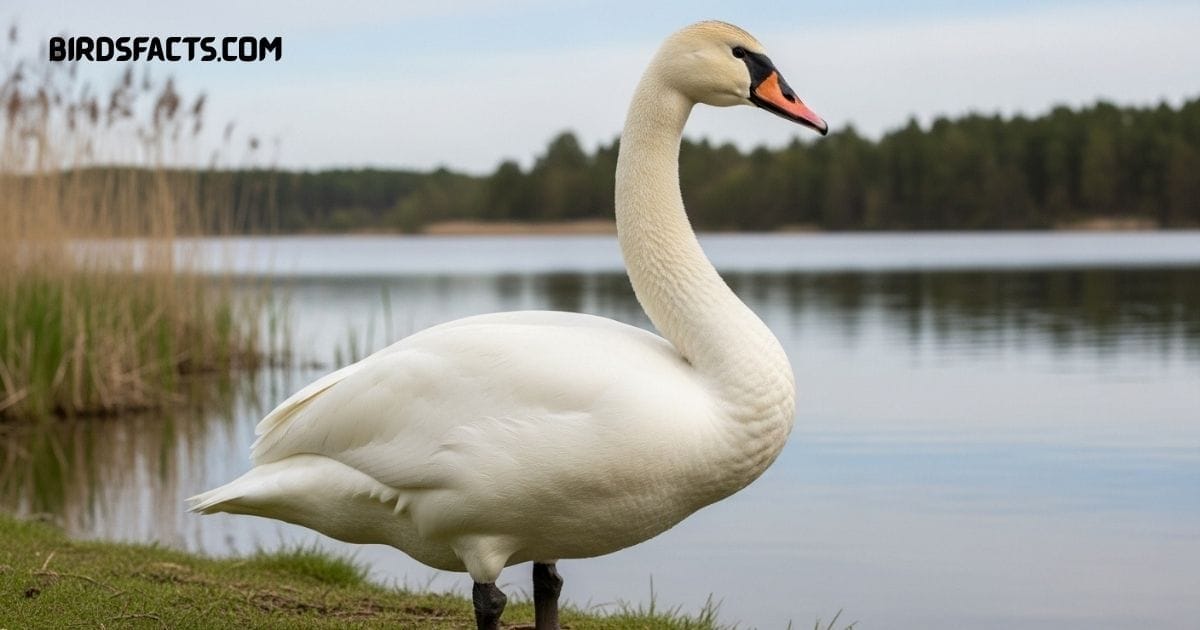
A Trumpeter Swan With A Large White Body And Black Bill Gracefully Swimming In A Lake.
The Trumpeter Swan Is The Largest Waterfowl Species In North America Boasting A Long Elegant Neck That Measures Nearly Half Its Body Length This Neck Allows It To Feed On Aquatic Vegetation Several Feet Underwater Pulling Up Roots And Stems Other Birds Cannot Reach. Its Powerful Build And Elongated Frame Give It An Imposing Yet Graceful Presence.
Its Name Comes From Its Deep, Trumpet-like Call, Which Resonates Through Wetlands And Across Lakes. These Vocalizations Produced With The Aid Of Its Long Trachea, Are Enhanced By Neck Length During Pair Bonding, Swans Intertwine Their Necks In A Heart-shaped Display Reinforcing Lifelong Partnerships. The Trumpeter Swan Demonstrates How Long Neck Bird Use This Feature For Feeding, Communication, And Emotional Connection.
Tricolored Heron
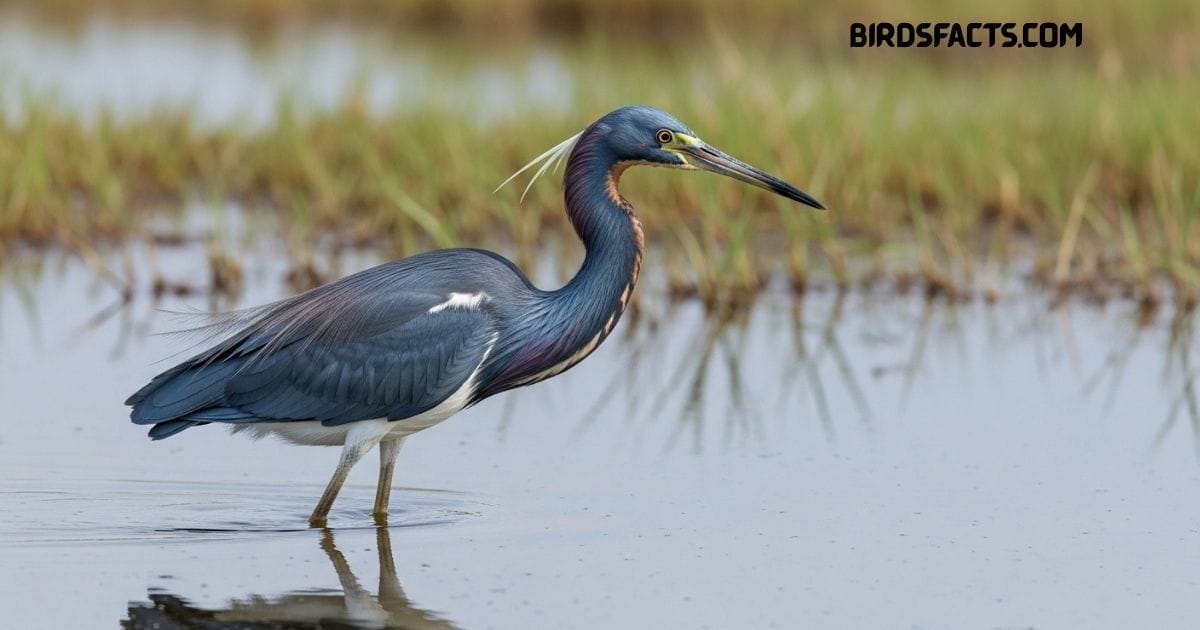
A Tricolored Heron With A Slender Neck, Bluish-gray Body, And White Belly Wading In Shallow Water.
The Tricolored Heron Is A Slender Long necked Wader Found In Marshes And Estuaries Of The Southeastern United States And Central America. Its Neck Is Essential For Hunting As It Stalks Prey With Patience Before Striking Lightning fast At Fish And Crustaceans. Its Plumage Of Blue gray White And Reddish Tones Makes It Easy To Distinguish From Other Herons.
Unlike Many Herons That Remain Still The Tricolored Heron Often Uses Active Hunting Methods. It Stretches And Bends Its Neck As It Chases Prey Through Shallow Waters Showcasing Agility And Persistence. During Breeding Season The Neck Feathers Take On Brighter Hues Adding To Its Striking Appearance. Its Dynamic Use Of The Neck Sets It Apart Among Wading Birds.
White-Faced Ibis
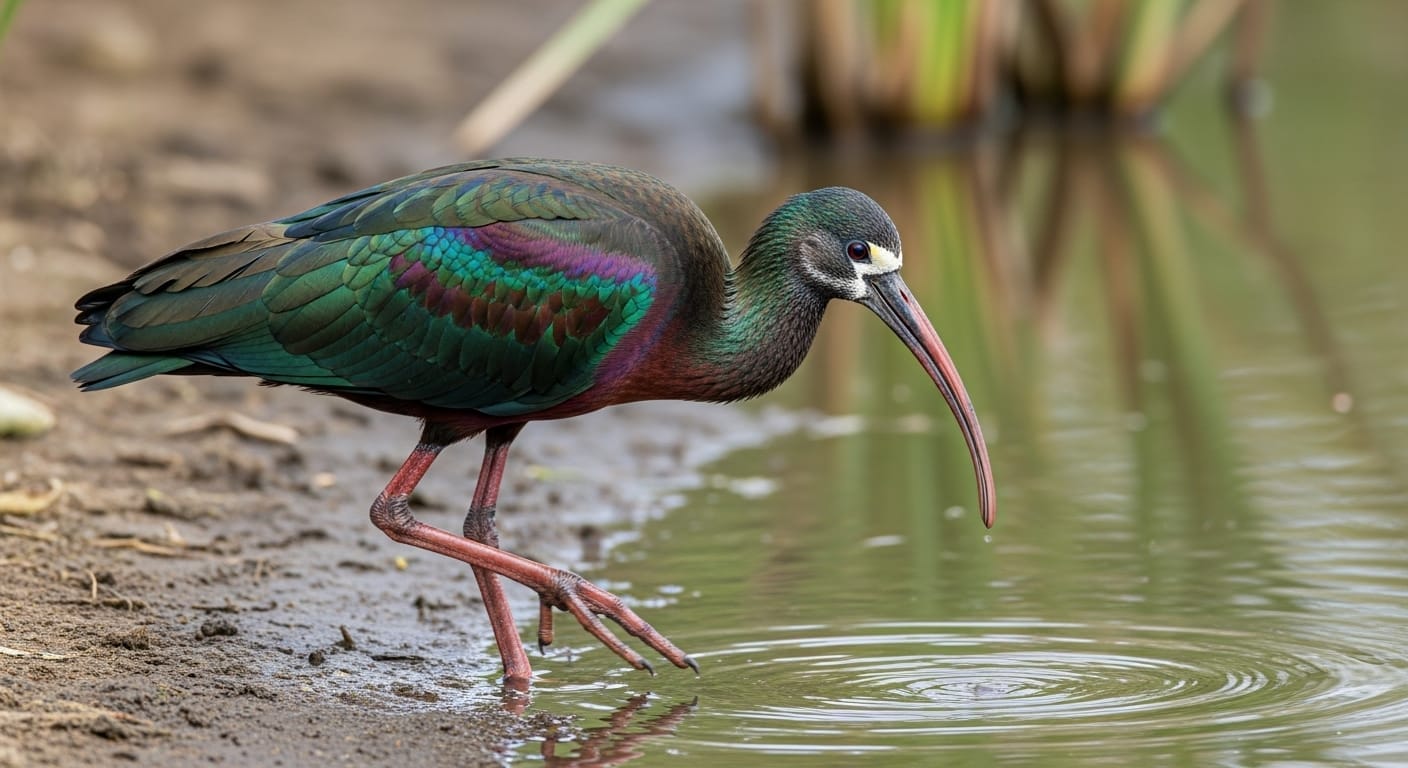
A White-faced Ibis With Dark Iridescent Plumage, Long Curved Bill, And Long Legs Standing In Shallow Water.
The White-faced Ibis Is A Sleek Long necked Bird With Shimmering Bronze green Plumage And A Long Curved Bill Its Neck Is Perfectly Adapted For Probing Wetlands Allowing It To Reach Deep Into Mud And Shallow Pools For Insects Crustaceans And Small Fish. Its Graceful Feeding Movements Make It A Captivating Sight In Marshes.
During Breeding Season The Ibis Develops A Bold White Border Around Its Face Contrasting Beautifully With Its Red Eyes And Iridescent Feathers. Courtship Involves Bowing And Stretching The Neck Signaling Readiness To Pair In Flocks Dozens Of Ibises Bend And Extend Their Necks Together While Feeding Creating A Coordinated Wave like Spectacle. The White faced Ibis Demonstrates How Form And Function Merge In Long neck Water Birds.
Whooping Crane
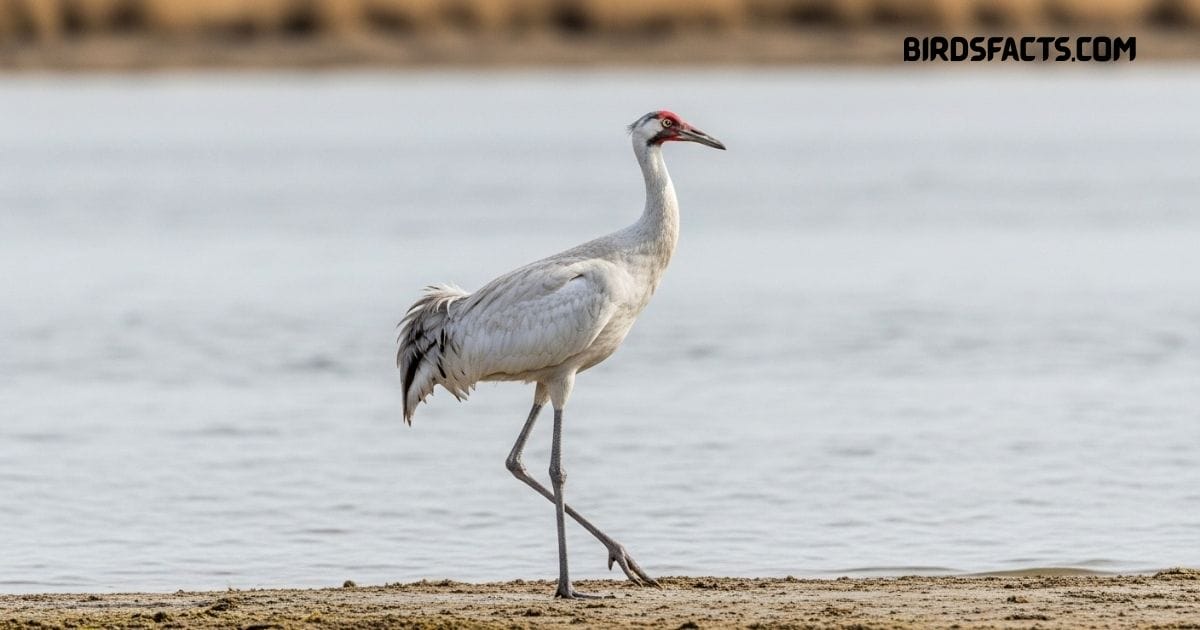
A Whooping Crane With Tall White Body, Black Wingtips, And A Red Crown Standing In A Wetland.”
The Whooping Crane Is A Tall And Elegant Long Neck Bird Standing Nearly Five Feet High And Ranking Among The Tallest Birds In North America. Its White Feathers Bright Red Crown And Long Black Legs Make It Easy To Recognize Even From A Distance The Crane’s Long Neck Helps It Search For Crabs Insects And Small Animals In Marshes And Coastal Wetlands With Slow Measured Steps It Moves Gracefully Through The Water Showing Both Strength And Calmness In Every Motion.
This Long Neck Bird Is Well Known For Its Beautiful Courtship Dances. Pairs Leap Flap Their Wings And Stretch Their Necks Upward In Perfect Coordination Creating A Display That Is Both Powerful And Graceful. Its Loud Echoing Call Made Through A Long Coiled Windpipe Can Carry For Miles Across Open Wetlands. Once Nearly Extinct The Whooping Crane’s Successful Recovery Has Become A Powerful Symbol Of Hope And Endurance In The Natural World.
FAQs
Which Bird Has The Longest Neck In The World?
The Ostrich Holds The Record With A Neck That Can Reach Up To 4 Feet Long Helping It Spot Predators Across Open Grasslands.
Why Do Some Birds Have Long Necks?
Long Necks Help Birds Feed Hunt And Survive In Different Habitats For Example Herons Use Their Flexible Necks To Catch Fish While Flamingos Filter Food From Water.
Are All Long-necked Birds Good Flyers?
Not All While Cranes And Swans Are Strong Fliers Species Like The Ostrich Emu And Cassowary Are Flightless But Use Their Long Necks For Balance And Survival.
What Habitats Are Long-necked Birds Usually Found In?
Most Long Neck Species Thrive In Wetlands Lakes Rivers And Grasslands. However Some Like Vultures And Ostriches Adapt Well To Deserts And Savannahs.
Do Long-necked Birds Have Unique Calls?
Yes Sandhill Cranes Produce Trumpet Like Sounds The Limpkin Is Known As The “crying Bird ” And Swans Make Soft Bugling Calls All Aided By Their Elongated Trachea.
Conclusion
From Graceful Cranes To Powerful Ostriches Each Long Neck Bird Showcases The Remarkable Diversity Of Adaptations Found In The Avian World. Their Extended Necks Serve Many Roles From Precise Hunting And Unique Feeding Styles To Producing Deep Calls And Performing Elegant Courtship Displays. Wading Species Like Herons And Egrets Rely On Their S-shaped Necks For Lightning-fast Strikes While Land Dwellers Such As The Emu And Ostrich Use Theirs For Balance Awareness And Survival.
These Long Neck Bird Species Also Highlight How Beauty Meets Purpose In Nature. Swans And Flamingos Thrive In Both Freshwater And Coastal Wetlands Helping To Sustain Delicate Ecosystems. From The Towering Stance Of A Crane To The Ancient Look Of The Marabou Stork Each Long-necked Bird Tells A Story Of Evolution Grace And Adaptation Living Proof Of Nature’s Endless Creativity.
Also Read
Further Reading
You May Also Check Out:
- Small Black Bird with White Belly
- Birds With Orange Beaks
- Big Birds in Ohio
- Florida Birds with Long Beaks
- Unlock Pro Tool
Thank You For Reading!





